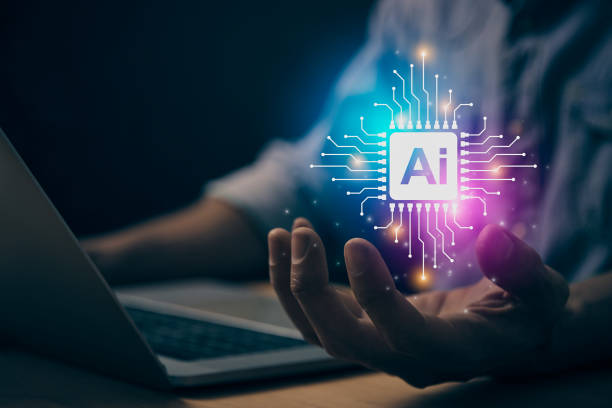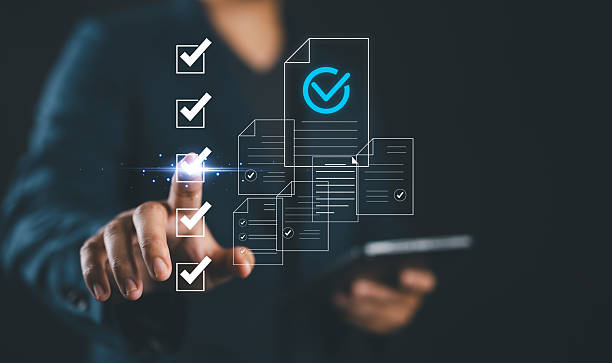What is an Artificial Intelligence Robot? Comprehensive Definition and Key Features

#Artificial Intelligence Robot is a combination of two important technology fields, namely robotics and artificial intelligence.
In simple terms, an artificial intelligence robot is a physical or virtual machine that, using artificial intelligence algorithms, is capable of performing tasks that usually require human intelligence.
These tasks can include learning, reasoning, problem-solving, understanding natural language, and pattern recognition.
Artificial intelligence robots use sensors to collect information from their surroundings and then, by processing this information with artificial intelligence algorithms, make decisions and act.
The key features of these robots are:
- Automation performing tasks without the need for direct human intervention.
- Learning improving performance over time and with experience.
- Adaptability ability to adapt to changing environmental conditions.
- Decision-making choosing the best action based on available data.
For example, an industrial robot that works on a factory production line can be an #artificial intelligence robot if it is able to automatically adjust itself to changes in the type of product, or independently find a solution if a problem arises.
These robots are used in various fields, including industry, medicine, customer service, and even space exploration.
Are you disappointed with the low conversion rate of your online store?
Rasaweb is your definitive solution with professional online store website design!
✅ Increase your sales and income
✅ Unparalleled user experience for your customers
⚡ Get a free consultation right now!
Applications of Artificial Intelligence Robots in Various Industries
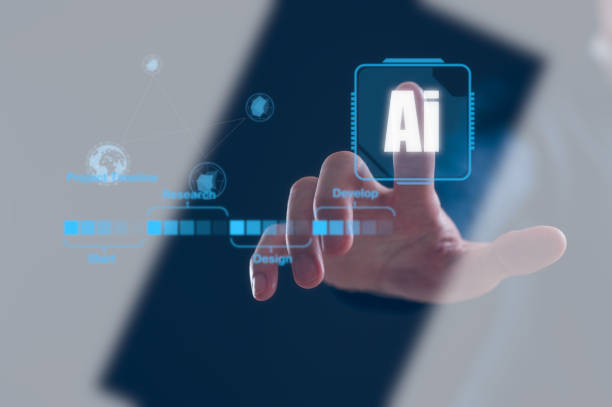
Artificial intelligence robots are rapidly penetrating various industries and bringing about dramatic changes.
In the manufacturing industry, artificial intelligence robots are used to automate production lines, control quality, and manage the supply chain.
These robots can perform repetitive and dangerous tasks with greater accuracy and speed than humans, thereby increasing productivity and safety.
In the healthcare industry, artificial intelligence robots are used for precise surgeries, disease diagnosis, and remote medical care.
These robots can use medical data to identify disease patterns and help doctors make more accurate diagnoses.
In the customer service industry, artificial intelligence robots are used as chatbots and virtual assistants to answer customer questions, provide technical support, and conduct financial transactions.
These robots can be available 24 hours a day and respond quickly to customer needs.
In addition, artificial intelligence robots have a variety of applications in fields such as agriculture, logistics, and energy, helping to improve performance and reduce costs.
The development and widespread application of these robots demonstrate the increasing impact of artificial intelligence in everyday life and industry.
In summary, artificial intelligence robots, with their learning, adaptability, and decision-making capabilities, are able to perform tasks that were previously only possible by humans.
These robots are creating fundamental changes in various industries and helping to improve the quality of life and increase productivity.
Benefits of Using Artificial Intelligence Robots: Detailed and Statistical Review
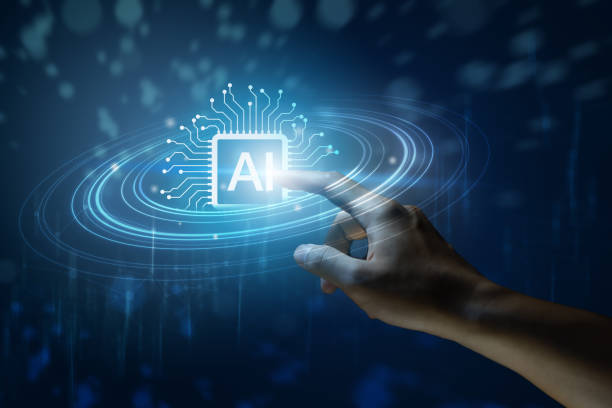
The use of #artificial intelligence robots offers numerous benefits for businesses and various industries.
One of the most important benefits is increased productivity.
Artificial intelligence robots can work continuously and tirelessly, thereby increasing the amount of production and the speed of task completion.
Another advantage is cost reduction.
By automating processes and reducing the need for human labor, businesses can significantly reduce their operating costs.
Artificial intelligence robots can also improve the quality of products and services.
By performing tasks accurately and without error, these robots can prevent human errors and ensure the quality of output.
In addition, the use of artificial intelligence robots can increase workplace safety.
These robots can perform dangerous and difficult tasks and prevent human injury.
Here is a table that shows a comparison between the performance of humans and artificial intelligence robots in performing some tasks:
| Feature | Human | Artificial Intelligence Robot |
|---|---|---|
| Speed | Variable | High and Constant |
| Accuracy | Variable | Very High |
| Fatigue | Yes | No |
| Cost | High | Medium to Low |
| Safety | Variable | High |
This table shows that artificial intelligence robots outperform humans in many aspects.
However, it should be noted that humans still excel in areas such as creativity, critical thinking, and empathy, and cannot be completely replaced.
Challenges of Implementing Artificial Intelligence Robots and Solutions to Overcome Them
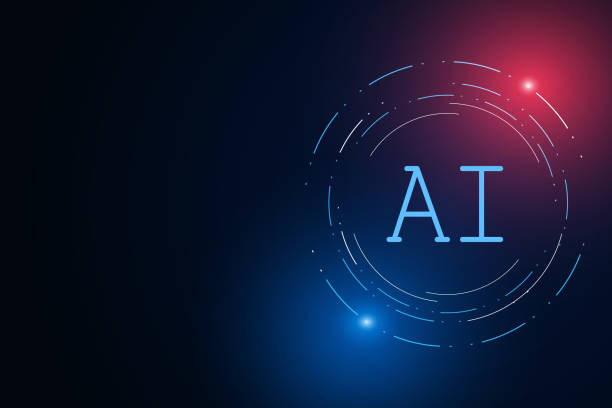
Implementing artificial intelligence robots comes with several challenges.
One of the most important challenges is the high cost of implementation.
Artificial intelligence robots and the infrastructure required for them can be very expensive and not affordable for many businesses.
Another challenge is the lack of specialized personnel.
The development, deployment, and maintenance of artificial intelligence robots require specialized knowledge and skills, and the lack of experts in this field can prevent the successful implementation of artificial intelligence robots.
In addition, there are ethical concerns.
The use of artificial intelligence robots can lead to job losses, discrimination, and privacy violations, and special attention should be paid to these issues.
To overcome these challenges, various solutions can be used.
One solution is to use phased and gradual approaches in the implementation of artificial intelligence robots.
Businesses can start with small and simple projects and gradually move to larger and more complex projects.
Another solution is to invest in the education and training of specialized personnel.
Governments and companies can increase the number of artificial intelligence robot experts by providing training courses and internships.
Also, developing ethical rules and regulations can help reduce ethical concerns.
These laws should specify the rights and responsibilities related to the use of artificial intelligence robots and prevent misuse of this technology.
In short, the implementation of artificial intelligence robots comes with several challenges, but with appropriate solutions, these challenges can be overcome and the benefits of this technology can be enjoyed.
Is your online store ready to attract maximum customers and increase sales? Rasaweb transforms your online business with modern and efficient online store designs.
✅ Increased speed and improved SEO
✅ Excellent user experience on mobile and desktop⚡ Get a free online store design consultation from Rasaweb!
The Future of Artificial Intelligence Robots: Predictions and Key Trends
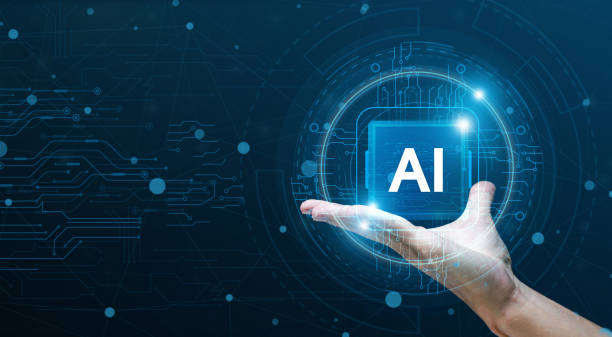
The future of artificial intelligence robots looks very bright and promising.
It is predicted that in the coming years, we will see an increasing expansion of the use of artificial intelligence robots in various industries and everyday life.
One of the key trends is the development of autonomous and smarter artificial intelligence robots.
These robots will be able to perform more complex tasks and adapt to changing environmental conditions without the need for human intervention.
Another trend is the integration of artificial intelligence robots with other emerging technologies such as the Internet of Things (IoT), Blockchain, and Augmented Reality (AR).
This integration can lead to the creation of new and innovative applications.
For example, an artificial intelligence robot can make better decisions and improve its performance by using data collected by IoT devices.
In addition, it is predicted that in the future, artificial intelligence robots will play a more important role in social life.
Artificial intelligence robots can help the elderly and disabled with daily tasks, teach children, and come to the aid of people in emergencies.
However, it should be noted that the development and use of artificial intelligence robots should be accompanied by responsibility and compliance with ethical principles.
Misuse of this technology should be prevented and it should be ensured that artificial intelligence robots act for the benefit of society and humanity.
In short, the future of artificial intelligence robots is full of new and exciting opportunities.
With the responsible development and application of this technology, we can help improve the quality of life and advance societies.
Artificial Intelligence Robots and Their Impact on the Labor Market

The impact of artificial intelligence robots on the labor market is one of the controversial and important topics.
On the one hand, there are concerns about job losses due to automation.
Artificial intelligence robots are able to perform tasks that were previously performed by humans, and this can lead to a reduction in job opportunities in some industries.
On the other hand, some believe that artificial intelligence robots can lead to the creation of new jobs and increased productivity.
By automating repetitive and tedious tasks, humans can focus on more creative and valuable tasks.
Also, the development, deployment, and maintenance of artificial intelligence robots require specialized personnel, and this can lead to the creation of new job opportunities in this field.
To reduce the negative effects of artificial intelligence robots on the labor market, various solutions can be used.
One solution is to invest in the education and retraining of the workforce.
Workers and employees whose jobs are at risk of automation should learn new skills so that they can be employed in new jobs related to artificial intelligence robots.
Another solution is to support entrepreneurship and the creation of new businesses.
By creating new businesses, new job opportunities can be created and unemployment rates can be prevented from increasing.
Also, governments can help businesses attract and train the workforce by providing supportive policies.
Ultimately, the impact of artificial intelligence robots on the labor market depends on how this technology is managed and the policies adopted.
With proper planning and investment in education and retraining, the benefits of artificial intelligence robots can be enjoyed and their negative effects can be minimized.
Artificial intelligence robot.
Types of Artificial Intelligence Robots: Categorization Based on Application and Function
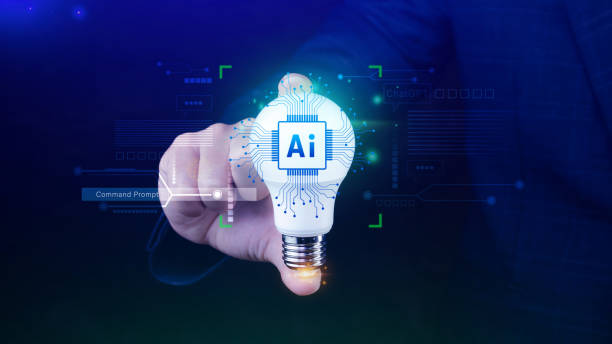
Artificial intelligence robots can be categorized into various types based on application and function.
One classification is based on the type of task that the robot performs.
Based on this, robots can be divided into industrial robots, service robots, medical robots, and military robots.
Industrial robots are used in factories to automate production lines, control quality, and package products.
Service robots are used in hotels, restaurants, and hospitals to provide services to customers and patients.
Medical robots are used in surgeries, disease diagnoses, and remote medical care.
Military robots are used in reconnaissance operations, bomb disposal, and equipment transport.
Here is a table that briefly shows the features and applications of each type of artificial intelligence robot:
| Robot Type | Features | Applications |
|---|---|---|
| Industrial | High Accuracy, High Speed, High Power | Production Lines, Quality Control, Packaging |
| Service | Interaction with Humans, Ability to Move in Dynamic Environments | Hotels, Restaurants, Hospitals |
| Medical | Very High Accuracy, Ability to Perform Complex Surgeries | Surgeries, Disease Diagnoses, Remote Care |
| Military | High Strength, Ability to Withstand Harsh Conditions | Reconnaissance, Bomb Disposal, Transport |
Another category is based on the type of artificial intelligence used in the robot.
Artificial intelligence robots
Skills Needed to Work with Artificial Intelligence Robots

Working with artificial intelligence robots requires a range of technical and non-technical skills.
One of the most important skills is programming knowledge.
Programmers must be able to implement artificial intelligence algorithms, control robots, and process data.
Another skill is knowledge of mathematics and statistics.
Mathematics and statistics are essential for understanding artificial intelligence algorithms, analyzing data, and modeling systems.
In addition, robotics knowledge is also important.
Robotics experts must be able to design, build, and maintain robots.
Non-technical skills are also important for working with artificial intelligence robots.
These skills include critical thinking, problem-solving, teamwork, and communication.
Artificial intelligence robot experts must be able to analyze complex problems, provide innovative solutions, collaborate with other team members, and effectively communicate the results of their work to others.
To acquire these skills, various methods can be used.
Participating in training courses and workshops, reading specialized books and articles, and doing practical projects can help people acquire the necessary skills.
Also, membership in associations and specialized groups can provide learning and networking opportunities.
By acquiring the necessary skills, people can succeed in the field of artificial intelligence robots and help advance this technology.
In short, working with #artificial intelligence robots requires a combination of technical and non-technical skills.
By acquiring these skills, people can succeed in this field and help develop and apply artificial intelligence robots.
Artificial intelligence robot.
Does your company website make a professional and lasting first impression on potential customers? Rasaweb, with its professional company website design, not only represents the credibility of your brand but also paves the way for the growth of your business.
✅ Create a powerful and reliable brand image
✅ Attract target customers and increase sales
⚡ Get a free consultation
Key Points in Buying and Choosing the Right Artificial Intelligence Robot
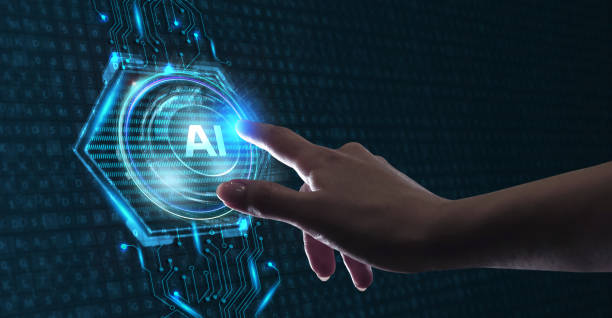
Buying and choosing the right artificial intelligence robot requires attention to key points.
First of all, you should accurately specify your needs and goals.
What tasks do you want the artificial intelligence robot to perform? How much budget do you have? What type of environment should the artificial intelligence robot work in? By answering these questions, you can narrow down your options and make a better choice.
Another point is to check the technical specifications of the robot.
Pay attention to factors such as speed, accuracy, power, and capabilities of the robot.
Make sure that the robot is able to perform your desired tasks with the desired quality.
Also, pay attention to the compatibility of the robot with other systems and equipment.
In addition, you should also pay attention to technical support and after-sales service.
Does the manufacturer provide adequate support services? Are spare parts easily available? By checking these items, you can prevent potential problems in the future.
You can also use the experiences of others.
Read the opinions and experiences of users who have used your desired artificial intelligence robot.
This can help you make a decision.
Finally, be sure to test the robot before buying.
Ask the seller to provide you with a trial version of the robot so that you can check its performance in a real environment.
By following these tips, you can choose the right #artificial intelligence robot and benefit from this technology.
Artificial intelligence robots.
Ethical Issues Surrounding Artificial Intelligence Robots

The development and use of artificial intelligence robots raise important ethical issues that need special attention.
One of the most important issues is the issue of accountability.
If an artificial intelligence robot makes a mistake and causes damage, who is responsible? Should the robot manufacturer, the robot user, or the robot itself be held responsible? These questions do not yet have definitive answers and require further discussion and review.
Another issue is the issue of discrimination.
Artificial intelligence algorithms can be trained based on historical data, and if this data contains bias, the artificial intelligence robot may also exhibit discriminatory behavior.
To prevent this problem, it should be ensured that the training data of the algorithms is free of any bias.
In addition, the issue of privacy is also of great importance.
Artificial intelligence robots can collect a lot of information about people, and it must be ensured that this information is stored securely and not misused.
Also, attention should be paid to the issue of transparency.
The performance of artificial intelligence robots should be explainable and understandable, and people should be able to ask questions about the decisions that these robots make.
By adhering to ethical principles and developing appropriate rules and regulations, the misuse of artificial intelligence robots can be prevented and the benefits of this technology can be used for the benefit of society.
In short, the development and use of artificial intelligence robots requires attention to ethical issues.
By adhering to ethical principles and developing appropriate rules and regulations, the misuse of this technology can be prevented and its benefits can be used for the benefit of society.
Artificial intelligence robots
Frequently Asked Questions
| Row | Question | Answer |
|---|---|---|
| 1 | What is an Artificial Intelligence Robot? | An artificial intelligence robot is a machine that is capable of understanding, reasoning, learning, and problem-solving and can perform complex tasks with relative autonomy. |
| 2 | What are the most important applications of artificial intelligence robots? | The main applications include industrial manufacturing, customer service (chatbots), medicine and surgery, self-driving transport, space exploration, and military affairs. |
| 3 | What is the main difference between an artificial intelligence robot and a regular robot? | A regular robot only follows programmed instructions, while an artificial intelligence robot can learn from data, make decisions, and adapt to new environments. |
| 4 | How do artificial intelligence robots learn? | They identify patterns and improve their performance through machine learning algorithms (such as deep learning, reinforcement learning) and processing vast amounts of data. |
| 5 | Can artificial intelligence robots have emotions? | Currently, artificial intelligence robots do not have real emotions in the human sense. They can mimic or recognize emotions, but they do not understand or experience them. |
| 6 | What are the current limitations of artificial intelligence robots? | Limitations include the need for a lot of data, the inability to understand abstract concepts, the lack of real creativity, ethical issues, and the challenges of generalizability in new environments. |
| 7 | What is the role of artificial intelligence in the development of Humanoid robots? | Artificial intelligence helps humanoid robots walk, maintain their balance, understand the environment, interact with humans, and perform complex tasks. |
| 8 | How is the future of artificial intelligence robots predicted? | It is predicted that artificial intelligence robots will become smarter, more autonomous, and capable of performing more complex tasks in everyday life and industry, and their interaction with humans will increase. |
| 9 | Can artificial intelligence robots replace all human jobs? | It is unlikely that all human jobs will be replaced. Robots take over many repetitive and dangerous tasks, but jobs that require creativity, empathy, and ethical judgment will remain. |
| 10 | What ethical and social challenges arise with the expansion of artificial intelligence robots? | Challenges include issues related to privacy, data security, ethical decision-making by robots, impact on employment, and accountability in the event of errors. |
And other Rasa Web advertising agency services in the field of advertising
Intelligent advertising campaign: An effective tool for analyzing customer behavior with the help of precise audience targeting.
Intelligent Marketplace: A quick and efficient solution for managing campaigns with a focus on marketing automation.
Intelligent UI/UX: A combination of creativity and technology to increase click-through rates by precisely targeting the audience.
Intelligent Link Building: Professional optimization to analyze customer behavior using intelligent data analysis.
Intelligent Marketing Automation: A novel service to increase customer behavior analysis through attractive user interface design.
And more than hundreds of other services in the field of internet advertising, advertising consulting and organizational solutions
Internet Advertising | Advertising Strategy | Advertorial
Resources
What is a smart robot?
,Smart robots in the service of humans
,Robotics and Artificial Intelligence Conference
,The Future of Robotics and Artificial Intelligence
? Rasaweb is the best companion for being seen and growing your business in the digital world. From professional WordPress website design to search engine optimization (SEO) and intelligent social media management, we offer everything you need to shine online with expertise and experience. Let your business shine powerfully on the web and achieve its lofty goals.
📍 Tehran, Mirdamad Street, next to the Central Bank, South Kazerun Alley, Ramin Alley No. 6

